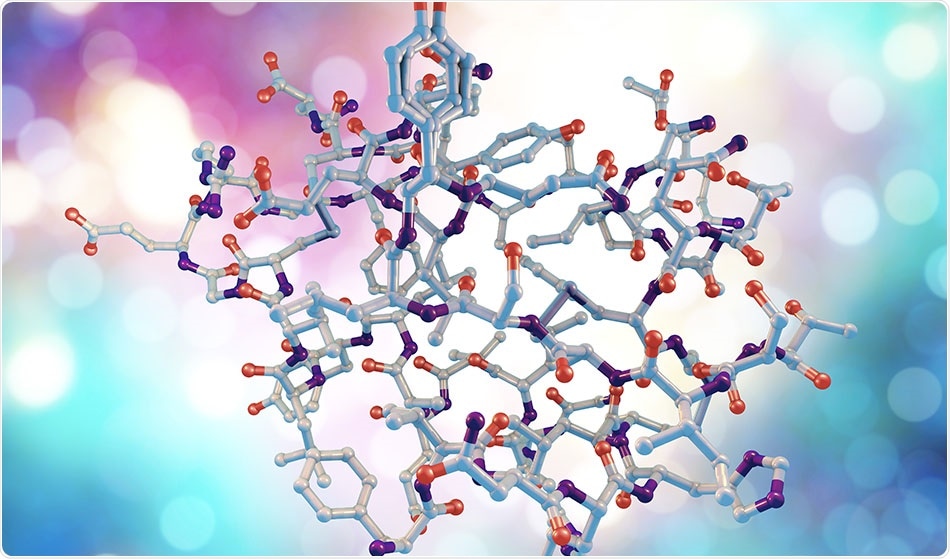Jan 17 2018
A recent study conducted by the TEDDY (The Environmental Determinants of Diabetes in the Young) international research team has identified six novel gene regions in children who are at risk of type 1 diabetes.

Credit: Kateryna Kon/Shutterstock.com
The polymorphisms were found in young people who already had type 1 diabetes as well as those in the pre-clinical stage of the disease; who have started making antibodies against insulin producing beta cells but have not yet developed the condition. All of these individuals will undergo a lifetime of insulin therapy.
It is hoped that the discovery will aid research into genes that cause diabetes and the identification of more targets for treatment or prevention.
The study also provided confirmation for three regions that had previously been associated with the development of type 1 diabetes.
Through longitudinal studies of at-risk individuals, the team also identified several chromosomal regions that determined which autoantibody would appear first in a patient.
The team looked at the two most commonly appearing autoantibodies: (a) IAA, which binds insulin directly, and (b) GADA, which targets glutamate decarboxylase; an enzyme that regulates the insulin-producing beta cells in the pancreas.
According to the principal investigator of the study, Dr. Jin-Xiong She, nearly 90% of the patients with type 1 diabetes have one or the other autoantibody initially, and most will eventually produce both. The second autoantibody can become evident a few days or even years later.
There is mounting evidence that we have at least two major subtypes of type 1 diabetes, based on the autoantibodies children have. Now we have found a genetic basis that supports that."
Dr Jin-Xiong She, Principal Investigator of the Study
One of the primary goals of TEDDY was to identify the genetic variations that are related with the progression or lack of progression to type 1 diabetes, she added.
The study involved 5,806 Caucasian patients and focused on both HLA and non-HLA genes.
Most of the genes that are known to be linked with type 1 diabetes (including the ones that are presently considered the top two high-risk genes) are categorized as human leukocyte antigen (HLA) genes as these genes are thought to regulate our immune system.
However, according to Dr. Ashok Sharma, who is an MCG bioinformatics expert and the first author of the study, studying non-HLA genes allowed the researchers to better identify children with the highest risk of diabetes.
"With HLA genes you can achieve a certain level of accuracy in identifying high-risk individuals. But if we can add additional genes into the screening, we can refine the prediction of the disease, we can increase the accuracy, we can probably even identify higher percentages of at-risk individuals," She explained.
Sharma pointed out that there are many genes involved in the disease and that the genes involved vary between individuals. Not all patients with the high-risk genes even get the disease. The reason for this is still unknown.
The team expects that the study might clarify how genetics and environmental factors such as childhood infections conspire to cause the disease.
The scientists also examined 176,586 single nucleotide polymorphisms (SNPs) that were related to other autoimmune diseases such as celiac disease or rheumatoid arthritis, but not type 1 diabetes. They identified SNPs in participants with type 1 diabetes that differed from those with islet cell autoantibodies and those who still had neither.
Previous studies indicate that the genes responsible for the production of islet cell antibodies are not always linked to the development of type 1 diabetes.
Also, while islet cell autoantibodies (IA) are considered as high risk factors for type 1 diabetes, not every child with IA will progress to full-blown disease. Despite this, the presence of IAs is still considered to increase the risk.
However, according to TEDDY scientists, different genes may play a role in IA development while others play a role in the progression of the disease.
The SNPs identified are in close proximity to a gene that does play a role in disease development, even though they themselves may or may not have a direct functional consequence. They can be used as markers to aid the researchers in the discovery of more causative genes.
One key aspect of the study was how closely and long the participants are observed. Generally, gene identification begins with a case-control design, in which a comparison of genetic variations is done between patients with a condition and healthy individuals. This helps in the identification of differences that may contribute to the disease.
The prospective and longitudinal TEDDY study is considered more beneficial than standard cross-sectional or case-control studies, where scientists observe high-risk young people to see if the disease occurs or not.
According to She, this is the first major study on gene identification for any disease that uses this kind of longitudinal information.